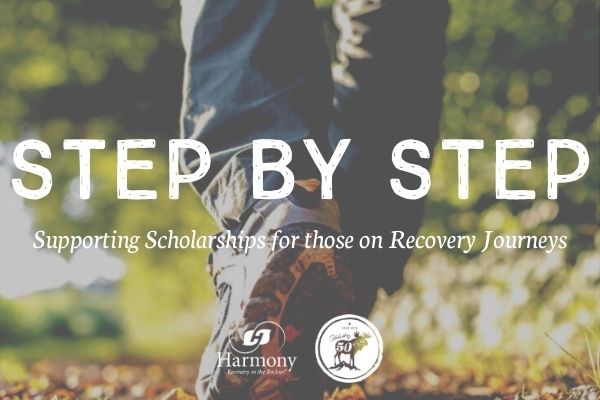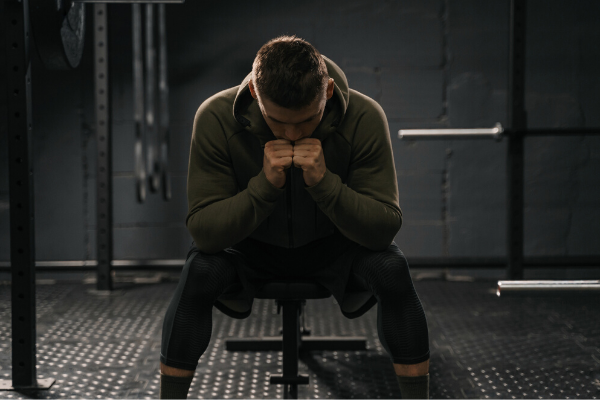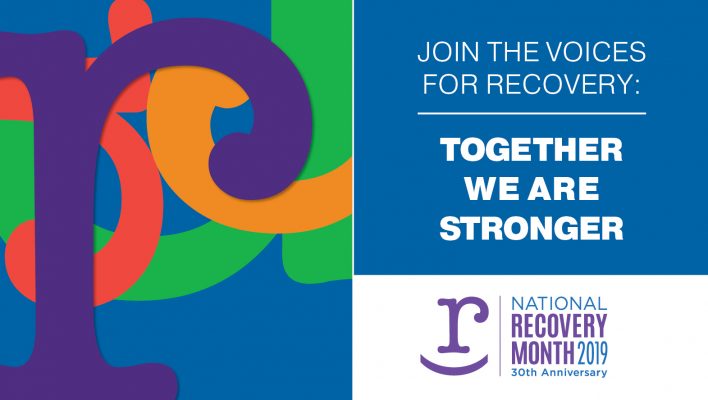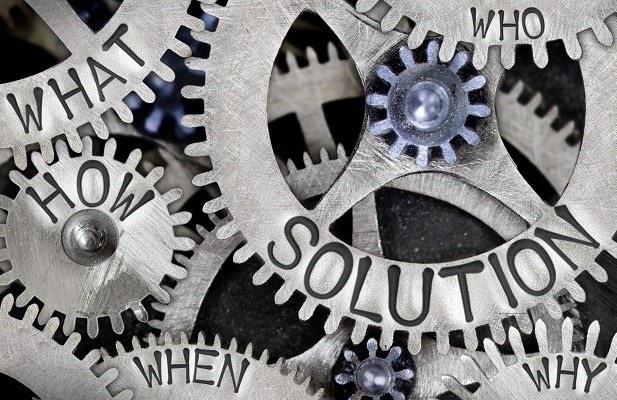The Recovery of Craig K.







Jessica Joiner, LCSW, LAC, has over a decade of experience working with those suffering from addiction, complex trauma, and co-occurring disorders. She uses her experience along with the extensive skills gained to address the many issues that arise for athletes.
In her workshop hosted by Harmony Foundation, Joiner discussed the prevalence of substance misuse among athletes, various ways of identifying “red flags,” and evidence-based interventions that can be helpful in combating the misuse of drugs and alcohol.
As Joiner explained, there are three main reasons athletes misuse substances: pain resulting from injuries, stress from incessant pressure to win, and the desire to enhance performance artificially. Over the years and decades, these reasons have stayed the same but the drugs involved are now more sophisticated than ever, with more options.
The statistics paint a grim picture. Substance misuse is prevalent in high school: approximately 19 percent of males and 14 percent of females binge drink in high school. 21 percent of teens use marijuana and up to 6.6 percent have used performance-enhancing drugs (PEDs).
It gets worse in college where 42 percent of students admit to binge drinking, 28 percent use cannabis, and around 11,000 NCAA athletes admit to taking PEDs. There is a strong correlation between concussions and alcohol use. “Having a concussion is actually predictive for alcohol use,” said Joiner. “If a high school student is entering college with a history of concussion, and we know about the correlation, we could put some measure in place to intervene before things get out of control. We don’t want them to get overwhelmed by the pressure of performing and the grades required to continue.” It’s much better to support them on the front end before things get out of hand.
Should players get drafted into the National Football League, the pain from injuries, the pressure to win, and the temptation to use PEDs get even worse. In the NFL, 51 percent of players use opioids and 71 percent of those athletes admit to misusing them. Many of the pills are not prescribed by medical doctors: 68 percent say they got them from other sources.
It takes only a few days to get addicted to opioids, Joiner warned, and professional athletes have easy access. Professional athletes tend to play through the pain and then “fix it” with opioids and other substances after the game, putting themselves at risk for greater injury and addiction.
Joiner then went over the possible consequences of such risky behavior, which include the impact on performance, health, relationships, and career—and in the worst-case scenario, death.
While substances were initially taken to enhance or maintain performance, escalating use will eventually compromise performance and wreak havoc with the athlete’s health. As is the case for all people with substance use disorder, addiction has “a definite negative impact on relationships.” If there is no intervention and treatment, players may end up with legal problems, a league suspension, or just get kicked off their team.
There are many examples of athletes falling into this trap. Former Boston Celtic Chris Herren struggled with substance misuse for much of his NBA career. While playing for the Celtics, Herren started to use opioid painkillers. In December 2007, he was charged with possession of heroin in Rhode Island and in the following June, Herren overdosed on heroin in Fall River, Massachusetts. According to the attending paramedics, he was clinically dead for 30 seconds.
Abby Wambach—widely considered the best female soccer player ever—was arrested for driving under the influence in 2016. Following the incident, Wambach published an autobiography revealing that she had misused prescription drugs and alcohol for many years.
After going into recovery, Herren started raising awareness of drug addiction and has now spoken to over one million students, athletes, and community members, promoting frank discussions about substance use disorder and wellness.
In the webinar, Joiner, too, stressed the importance of prevention and early intervention to attack this problem. Prevention should include educating everybody involved to raise awareness of mental health issues that often drive substance misuse, so parents, teachers, and coaches learn to recognize red flags. “From the outside, it often looks like they have everything”, explained Joiner. That’s why depression and anxiety disorders are often overlooked. Testing, screening and other interventions should be used in a supportive, not punitive way.
“We should stop just being reactive and be more proactive,” Joiner said. Coaches and trainers of athletes should not wait for a crisis to unfold and athletic programs should provide adequate mental health services for players (and other students). Treatment should not be perceived as punishment for bad behavior but as a concerted effort to heal psychological problems. “We need effective collaboration between therapists, doctors, school departments, and the community that facilitates integrated care,” Joiner said. Currently, too many people fall through the cracks because many athletic departments don’t provide nearly enough mental health professionals. Ultimately, a culture shift is required: our society’s approach to athletic injuries and mental illness needs to change significantly and we need more trauma-informed and stigma-free care—and not only for athletes.

Colorado drug addiction program is celebrating it’s 50th Anniversary with a new intensive outpatient program with a unique twist and a Fort Collins Recovery Center. Gala celebrating milestone was held Oct 25 in Denver with special guest Carnie Wilson of Wilson Phillips. Continue reading “Harmony Foundation Announces Second Major Expansion During Its 50th Year”

September is Recovery Month and this year the Substance Abuse and Mental Health Services Administration (SAMHSA) celebrates the 30th anniversary of this addiction awareness campaign. The 2019 theme, “Join the Voices for Recovery: Together We Are Stronger,” emphasizes the need to share resources and build networks to support the many paths to recovery. It reminds us that mental health and substance use disorders affect all of us and that we can all be part of the solution. Recovery Month highlights inspiring stories to help many people from all walks of life find the path to hope, health, and overall well-being.
One of those inspiring stories is Michael Arnold’s recovery from alcohol addiction. Michael’s alcohol use disorder almost killed her but she turned her life around and now works as an alumni relations manager at the Harmony Foundation. “Every day is a day of recovery, of course, but Recovery Month is that much more focused and there is more intention behind the message of hope that we are all trying to put forward, emphasizing that you can recover,” says Arnold.
Recovery Month began in 1989 as “Treatment Works! Month,” which honored the work of substance use treatment professionals in the field. A lot has changed in 30 years of fighting the stigma of addiction. “Every single year it’s getting better—especially now that alcohol and drug addiction is recognized as a disease of the brain,” says Arnold. “More and more people are starting to show more compassion and desire to understand instead of judging.”
Harmony is celebrating Recovery Month with a 50th-anniversary alumni reunion and a special workshop. “It will look at vulnerability, communication, and owning your sobriety,” explains Arnold. “Behind the ‘stronger together’ motto there is a lot of vulnerability for people in recovery and the workshop will discuss that.” Michael’s own motto is “recover out loud!” Her way of dealing with the disease is to help others, sharing the story of her addiction and recovery instead of hiding her past.
“Our addiction wants us in isolation—completely alone,” she says. “Our addiction wants us in the dark. How do we combat this? Together. Together, we can recover. In order to live a healthy life in sobriety, it is imperative to have a community. When we recover together, we become part of each other’s solutions.”
To spread the message that the door to recovery is always open, she has co-authored a book about recovery. “Our book is all about the fact that addiction doesn’t discriminate, and so recovery doesn’t, either. We work together, no matter what your pathway to recovery may be.”
You can be part of Recovery Month, too
One way to help your community rally around treatment and recovery is to encourage
social media user-generated content. Urge participants to use hashtags like #RecoveryMonth, #RisforRecovery, or #Recovery. Encourage them to share their personal stories about recovery and to tag their friends, family, and other members of their community. A local social media campaign is something easy for people to participate in and can foster a positive, collaborative spirit among community members.
SAMHSA’s Recovery Month toolkit provides a lot more information, resources, and ideas on how to get involved. With your help, the millions of Americans affected by mental and substance use disorders, including co-occurring disorders, will be lifted up into a life in recovery, filled with hope, health, and personal growth.

More than two-thirds of drug overdose deaths in the United States in 2017 involved opioids, according to the Centers for Disease Control and Prevention, escalating an epidemic the CDC says “continues to worsen and evolve.” From 2016 to 2017, opioid-related overdose deaths increased 12 percent overall, surging among all age groups 15 and older.
The CDC report’s recommendations for curbing opioid-related overdose deaths include “increasing naloxone availability, expanding access to medication-assisted treatment, enhancing public health and public safety partnerships, and maximizing the ability of health systems to link persons to treatment and harm-reduction services.”
Naloxone is a medication often used by first responders because it can rapidly reverse opioid overdose. It is an opioid antagonist—it binds to opioid receptors and can reverse and block the effects of other opioids. It can quickly restore normal respiration to a person whose breathing has slowed or stopped as a result of overdosing with heroin or prescription opioid pain relievers.
Medication-assisted treatment (MAT) is used to decrease opioid use, opioid-related overdose deaths, criminal activity, and infectious disease transmission. Medications used for the treatment of opioid use disorder are buprenorphine (Suboxone, Subutex), methadone, and extended release naltrexone (Vivitrol). Some of these drugs are controversial in the recovery community because they are themselves opioids.
The National Institute on Drug Abuse, a US government research institute, clarifies that contrary to what some critics say, “methadone and buprenorphine DO NOT substitute one addiction for another. When someone is treated for an opioid addiction, the dosage of medication used does not get them high–it helps reduce opioid cravings and withdrawal. These medications restore balance to the brain circuits affected by addiction, allowing the patient’s brain to heal while working toward recovery.”
The use of these medications should always be combined with behavioral counseling with the ultimate aim of ceasing all substance misuse.
HOPE – Harmony’s Opioid Programming Experience
Harmony has provided all clients with medication-assisted treatment for many years. This combination of education, counseling, and the use of medication in early recovery is part of the Harmony philosophy. HOPE expands MAT to include medications that alter the physical response to opioids, reduce cravings, and give the patient time to heal from the psychological, social, and spiritual wounds of addiction.
“It’s important to remember that MAT is only a small part of the picture,” says Harmony’s medical director Christopher Reveley. “That is why we call it ‘medication-assisted’ treatment, because by itself it is not the treatment. Used alone it has a low probability of being successful.”
At Harmony, HOPE begins with thorough medical and psychological evaluations. Collaboration with the patient, members of the interdisciplinary team and, when appropriate, family and referral sources, determine the most effective treatment plan. All HOPE clients are invited to participate in weekly support groups led by a professional addiction counselor. These groups address the unique challenges of early opioid recovery, including uncomfortable physical and psychological symptoms, cravings, and strategies to avoid relapse. In this setting, clients support each other and are educated about the process of recovery.
Medication-assisted therapy may help stabilize the patient for these challenges in early recovery. “It gives people an opportunity to step out of the chaos of addiction and consider other ways of being,” says Dr. Reveley. “I never felt that buprenorphine was meant as a lifelong or even long-term solution.” Although there may be exceptions. It all depends on the individual needs of the patient. Reveley remembers a patient who had been on methadone for 46 years. “He tried to taper off a dozen times and relapsed to heroin use every single time. His family was initially very opposed to him being on methadone but eventually they told him ‘this is working, your life depends on it.’ So there are people on either end of the bell curve but in most cases buprenorphine is only a small but important part of the solution.”
Buprenorphine can be an important tool, especially in early recovery from opioid use disorder. The medication offers patients the opportunity to start living a “normal” life, far removed from the drug culture lifestyle they may have been immersed in while using heroin and other opioids. People are dying every day from opioid overdoses, especially in the age of the fentanyl scourge. Buprenorphine may provide the buffer that enables them to launch into sustained recovery. It is a buffer that can save people with addiction from a potentially lethal overdose.
Harmony has been treating addiction for 49 years and HOPE is now offered to all Harmony clients with opioid use disorders. The program involves enhanced medical, counseling, and case management services specifically tailored to meet these clients’ unique needs.
The Harmony care team works closely with clients who choose to include buprenorphine in their treatment strategy. This will typically involve full participation in HOPE and a recommendation for participation in Harmony’s Transitional Care Program (TCP), an intensive, 90 day intensive outpatient program coupled with monitored sober living and medication management by Harmony providers. When clinically indicated or to accommodate client preference, Harmony’s case managers may refer clients to other programs with similar services.
If you or someone you know is struggling with opioid use disorder and needs help, call Harmony at 970-432-8075 and one of our admissions specialists can discuss next steps.

Addiction is a family disease. The Recovery Book advises family members of people in recovery that “Everyone in your family, as well as other people in your lives, has been affected by addiction in some way. Now you all need to work on getting your lives back to some kind of normal.”
Michael Arnold is a recovering alcoholic who now works as an alumni relations manager at the Harmony Foundation. In a recent Facebook Live with her twin sister, Michael and Casey talked about the impact Michael’s addiction and recovery had on their relationship. Both siblings demonstrated how important clear and honest communication is for the family dynamic.
Michael talked about the need to share with “brutal honesty what addiction can do to your family.” Casey talked about how hard it was for her to watch Michael decline in active addiction, realizing there was nothing she could do, that Michael had to save herself.
Michael recalls doing things to her family that “just weren’t nice.” Casey remembers all too well. Seven years ago Michael helped to put her twin sister briefly in jail—just to hurt her. Michael was in such a bad place that to hurt her sister made her feel better.
“I never thought I could be close with Michael again, never thought I could trust her again,” Casey said. But change can happen. Recovery can work miracles. “Michael has changed. She is not the person she was seven years ago,” Casey said. “She is not that selfish person that put me in jail. She’s working very hard at it every day.”
For desperate family members the trick is to be patient and supportive. “Don’t hammer people in recovery about all the mistakes they made in active addiction” all the time. “Show your love,” Casey said. “You need to have grace and patience with them. As family members you have to give them space to recover, the harder you are on them the worse it’s going to be.”
Appealing to people in the audience who have family members with addiction, Casey said, “You have to choose either to be there and support them or walk away. You can’t live in the middle and hold their past wrongdoings against them—that doesn’t help them recover. I have nothing but complete love for Michael now and I’m just so proud of her. It’s been a journey for both of us.”
Michael shared her side of that journey. Only “when I went through rehab did I get the tools to tell myself everyday to have that patience, to be so grateful that I’m sober. I have to know that my family will trust me; that they should realize that I’m a changed person but time is not on my side.”
It’s important to remember that recovery is a process. “I thought simply that Casey and I would be okay now that I’m sober. The relationship would be fine but it wasn’t,” Michael remembers. “Casey gave me that space for about a year to recover, but then she said ‘we need to talk about what happened’ so that we can move forward.”
Casey had to tell Michael what she had done to her and “she took it hard. I love you, I forgive you, but you have to earn the trust back.” That shook Michael, “but now our relationship is even stronger because you have to be able to open up about these things or they will simply fester.”
Making amends is an ongoing process for Michael now and Casey knows it. “Michael is ruthless and relentless about her recovery—she has even written a book about it. She is working hard every single day and that is all you can ask.”

We recently received a Facebook post regarding frustration over Harmony’s handling of payments made through insurance. I wanted to use this opportunity to discuss questions and concerns about our partnerships with insurance partners and how we believe it helps benefit access to treatment.
First and foremost, insurance companies make it easier for us to cover some of the cost of treatment, a service that many of us do not plan for when the time requires it. When we consider our personal relationships with insurance partners, how many of us would be able to have yearly physicals, emergency procedures, or access to treatment? As a provider, Harmony works with our insurance partners to provide the appropriate level of care for the appropriate period of time.
Harmony has a 49 year history of providing a residential level of care; this is the highest level of care for people suffering from substance use disorder. We have a responsibility to our clients to stabilize them medically, assess their conditions, provide them with a diagnosis, work with them to create a foundation for sustained recovery, and construct a comprehensive continuing care plan which will support their recovery. The relationships we have fostered with insurance partners has allowed us to work collaboratively to support access to care along the continuum. Under the umbrella of the American Society of Addiction Medicine (ASAM), together, insurance companies and treatment providers alike are held to the highest standards of care for addiction treatment. This common language, reviewed in tandem with insurance providers determines what level of care an individual requires.
Sometimes there is disagreement. For example, when Harmony feels that a client would be better served by remaining at a residential level of care and an insurance provider feels they would be successful at the next level. Other times, a client would like to remain in treatment, however our expert clinical and medical staff believe they are ready to move toward self-management of their own recovery at a level of care which empowers them to practice the early skills of recovery they learned here. In most cases, to arrive at a decision to move a client to the next level of care, involves a conversation with our Medical Director and a physician reviewing the case for the insurance company. We work to keep people at the appropriate level of care indicated by our clinical staff recommendations based on the client’s progress.
Harmony has a dedicated utilization review team, clinical professionals who work with our insurance partners, staff, and clients to keep people at the level of care which will provide them the greatest opportunities for success. When it is determined that funding for residential care has ended, we work to inform the client as quickly as we are able. Unfortunately in this situation the determination for a shift in levels of care is immediate, funding ceases that day. In order to ease the transition for clients and families, Harmony is committed to absorbing the expense of an additional night’s stay for clients. This is not common practice and comes at a fair cost. For example, in the month of July, we provided $28,000 in housing and care at no additional expense to clients. We are able to continue to do this through the generosity of our donors. We recognize the challenge and frustration of learning at 4 pm that one no longer has financing for treatment, however we are dedicated to continue to support our clients during this transition period.
There is nothing magical about 28 days of treatment. We have heard the 28 day timeframe used for many years, growing in public awareness with the Sandra Bullock film. The reality is that proven success is driven by long term engagement in treatment within a full continuum of care, at multiple levels increasing the opportunity for self-management.
We will always remain committed to providing access to treatment whenever possible, using all means necessary to help individuals receive treatment that can build an early foundation of recovery. This could look like something as short as a few days or as long as 4 months. Either way, our partnerships with insurance and our recommendations for treatment will always be the focus in providing individualized care for clients.
Jim Geckler is the Chief Executive Officer for Harmony Foundation.